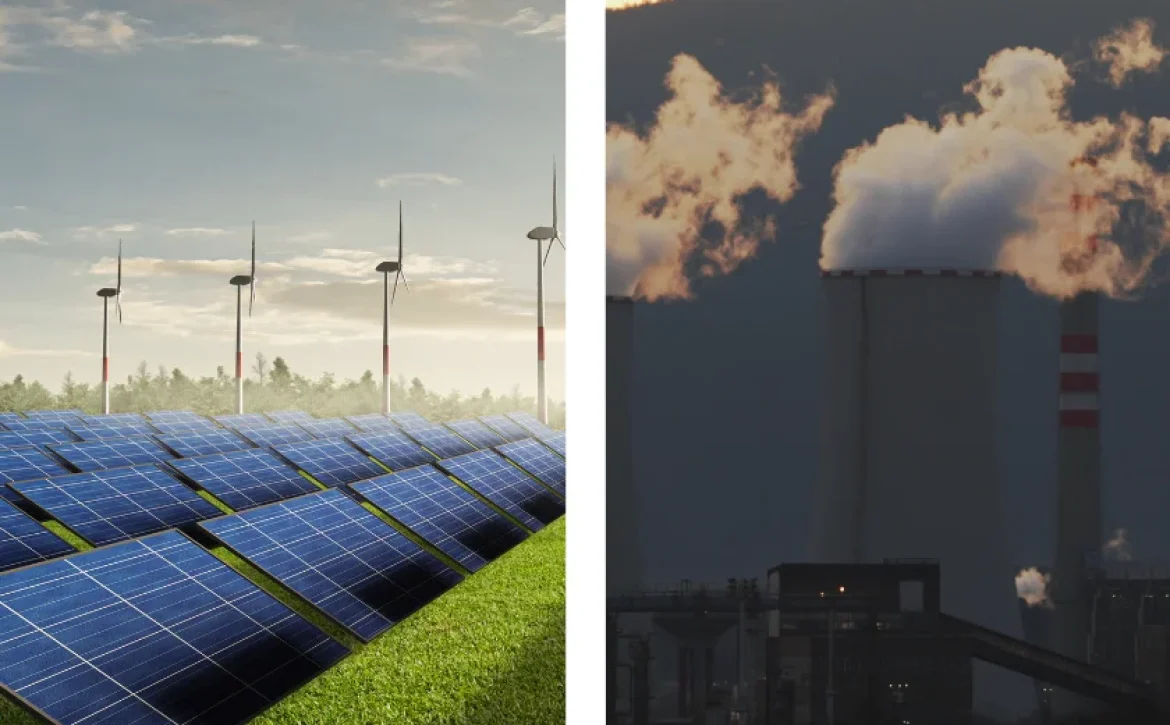List of Renewable and Non-Renewable Energy Resources
Gone are the days when all electricity was produced by fossil fuels, hydropower or nuclear means. The modern energy landscape depends on both renewable and non-renewable resources, which influence how we run our houses and cars and sustain various sectors.
Making sustainable decisions is made easier when we are aware of the significance of these energy resources. We can make a switch to more environmentally friendly options, lessen our carbon footprint, and protect ecosystems. It gives us the ability to promote legislation promoting renewable energy, make investments in green technology, and forge a sustainable future.
Renewable Resources
‘Renewable’ resources mean just what they imply: these are energy resources which can be harnessed again and again without harming Earth’s atmosphere or depleting its resource stockpiles. These are clean, sustainable energy sources that replenish naturally and quickly enough for human use.
They provide long-term accessibility, which lessens reliance on limited fossil resources. Renewable energy sources support economic expansion, employment development, and energy independence. Let us take a look at some major renewables:
- Solar Energy
When you wake up every morning, it turns out the sun had woken up even earlier, and it has been doing that for billions of years and will keep doing that for countless more years.
It is hard to face the scorching sun because it throws a lot of radiation (sunlight) on us every second. However, Solar energy uses photovoltaic (PV) technology to capture that radiation and turn sunlight into electricity.
The potential uses of solar tech are endless: including residential rooftop solar panels and huge solar farms. Solar energy is also employed in agriculture, water purification, and heating. By lowering greenhouse gas emissions and enhancing air quality, it benefits the environment.
The one caveat with solar energy is the relatively high installation cost, which is a big obstacle against wider adoption. Improving energy storage and lowering panel costs might help in that regard, leading to a future where clean electricity is available on affordable prices.
2. Wind Energy
On a windy day, it could be hard for you to go outside and keep your balance. It turns out there are places on Earth where wind speeds are higher than normal most times of the year. Wind energy is a clean renewable resource where huge turbines are powered by massive fans constantly moving by harnessing those strong winds, generating electricity in the process.
Wing energy provides advantages such as being environmentally friendly, abundant, and cost-competitive. Wind farms, located onshore or offshore in areas with consistent wind patterns, contribute to the growth of this sector and provide sustainable electricity. They also bring economic benefits through job creation and lease payments to landowners.
However, intermittent wind availability requires energy storage infrastructure and addressing concerns about noise, visual impact, and wildlife effects through careful site selection and community engagement.
3. Hydropower
The most common method of electricity generation: hydropower is a dependable and clean energy source that uses falling or flowing water to produce electricity. Large-scale dams or run-of-river systems can do it. Hydropower minimizes greenhouse gas emissions, lessens air pollution, and offers a reliable electrical supply.
Dam building, however, can have negative effects on the ecosystem, such as altering habitats and causing sedimentation. Depleting rivers, and rising conflicts between different countries over the ownership to major rivers are also significant problems facing hydropower sector. Proper planning and contingency measures are necessary to address these concerns.
4. Biomass
Biomass refers to the process of utilizing organic matter (derived from plants, animals, and organic waste materials) for renewable energy. It can be converted into bioenergy or biofuels through methods like combustion, gasification, and anaerobic digestion. Biomass can be used for heating buildings, generating electricity, and producing biofuels.
Sustainability is a crucial component of biomass energy. In order to guarantee that the biomass feedstock comes from sustainable sources, responsible sourcing is required. This include techniques like reforestation, the use of special energy crops cultivated on marginal areas, and the utilization of agricultural byproducts or organic waste products that would otherwise be disposed of in landfills.
5. Geothermal Energy
While we sit pretty on the ground, the area below the surface is anything but normal. Earth’s crust gets hotter the deeper you go.
Geothermal energy is the process of capturing that very heat from the Earth’s crust to turn into usable energy. Direct-use systems and power plants may utilize it for cooling, heating, and energy generation. Geothermal energy has a low impact on the environment, is a dependable and healthy renewable resource, requires little space, and offers a steady source of electricity.
The devil lies in the details though. Drilling deep into Earth’s surface and harnessing that heat is done through gigantic machines, which are very costly, and its accessibility is also dependent on geological conditions. But once the initial investment is done with, we have an unlimited source of clean and renewable energy on our hands.
Non-Renewable Resources
Non-renewable resources are those which are dependent on elements in limited supply. These resources (such as fossil fuels and minerals) take millions of years to form, and each subsequent use reduces the stockpile of the element they’re harnessed from.
Non-renewables are also not friendly for the environment. Air pollution, habitat damage, and water contamination are all results of their extraction and usage. The fast depletion of non-renewable resources raises questions about the security of the energy supply. Their depletion causes also socioeconomic difficulties.
Here are the major non-renewable resources:
- Fossil Fuels (Coal, Oil, Natural Gas)
The most often utilized non-renewable resources for energy generation are fossil fuels, which include coal, oil, and natural gas.
Coal
Coal is the most abundant fossil fuel on Earth, and is created from the remnants of ancient plants that were submerged, heated, and compressed over millions of years. It is extracted using open-pit or underground mining techniques. Coal-fired power stations generally use coal to generate energy. Burning it releases steam, which powers turbines to produce energy, which contributes to massive air pollution, smog, and respiratory health problems.
Oil
Oil (or Petroleum) is created from the leftovers of marine plants and animals. It is taken out by drilling wells either onshore or offshore, and is later refined to use in vehicles and electricity generation.
The combustion of fuels made from oil emits greenhouse gases like CO2, wreaking havoc on the atmosphere. Marine life and ecosystems can also be severely harmed by oil spills that occur during extraction, transportation, or accidents.
Natural gas
Natural gas (primarily composed of Methane) is created underground as organic matter breaks down. It is found near oil reservoirs and may be found in shale formations by hydraulic fracturing (also known as “fracking”). Natural gas is a fuel for automobiles as well as for producing power and heating.
Although using natural gas emits less pollutants than burning coal or oil, it still creates CO2 and methane, a powerful greenhouse gas. Climate change is further exacerbated by methane leaks that occur during extraction and transportation.
2. Nuclear Energy
Nuclear energy is derived from nuclear fission, which produces power with low carbon emissions. Although it offers a dependable power source, there are safety and waste disposal issues. Management of radioactive waste and nuclear accidents are difficulties. Moreover, environmental and societal effects also result from mining and industry. For the use of nuclear energy to be safe and sustainable, responsible management, safety procedures, and research are required.
Conclusion
Our energy future depends on our ability to differentiate between renewable and non-renewable resources. To combat climate change and save the environment, a switch to sustainable energy sources including solar, wind, hydropower, biomass, and geothermal energy is essential. For a cleaner and greener future, people, governments, and organizations should prioritize sustainable energy, invest in infrastructure and research, and make educated decisions.
FAQs:
- What are 5 renewable and nonrenewable resources?
Renewables:
- Solar
- Wing
- Hydropower
- Biomass
- Geothermal
Nonrenewable:
- Oil
- Natural Gas
- Coal
- Nuclear
- Ground Water
- What are 5 examples of nonrenewable resources?
- Ground Water
- Natural Gas
- Oil
- Nuclear
- Coal


